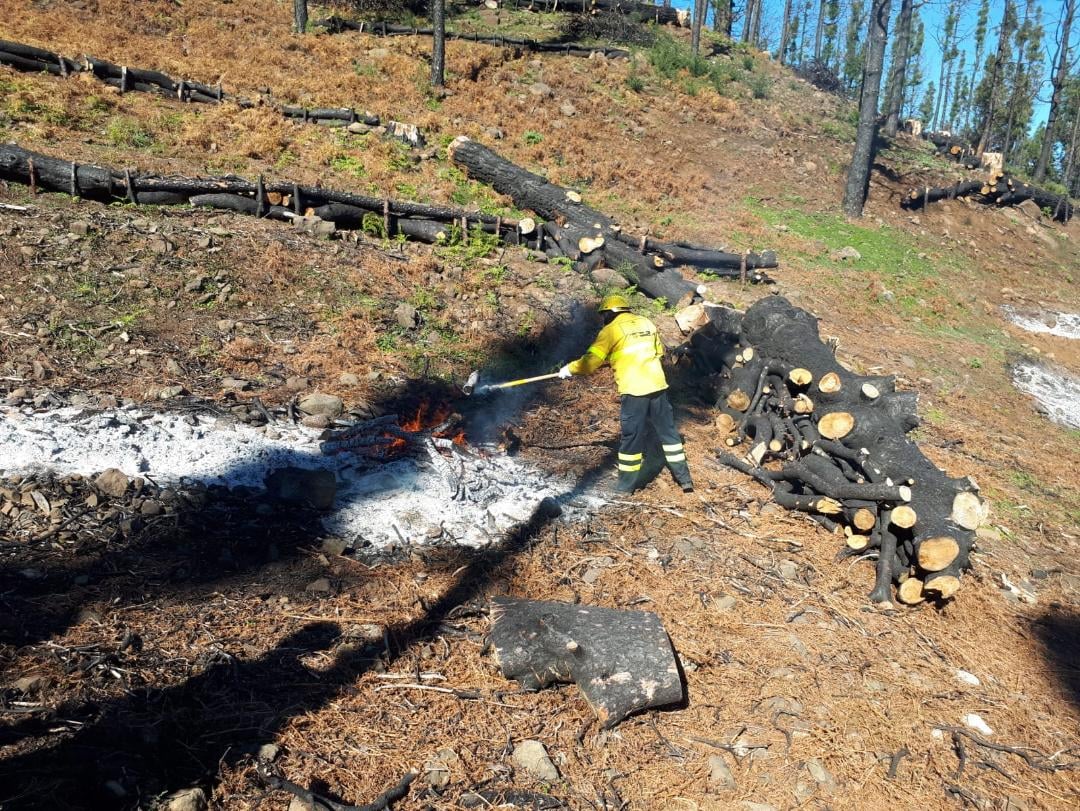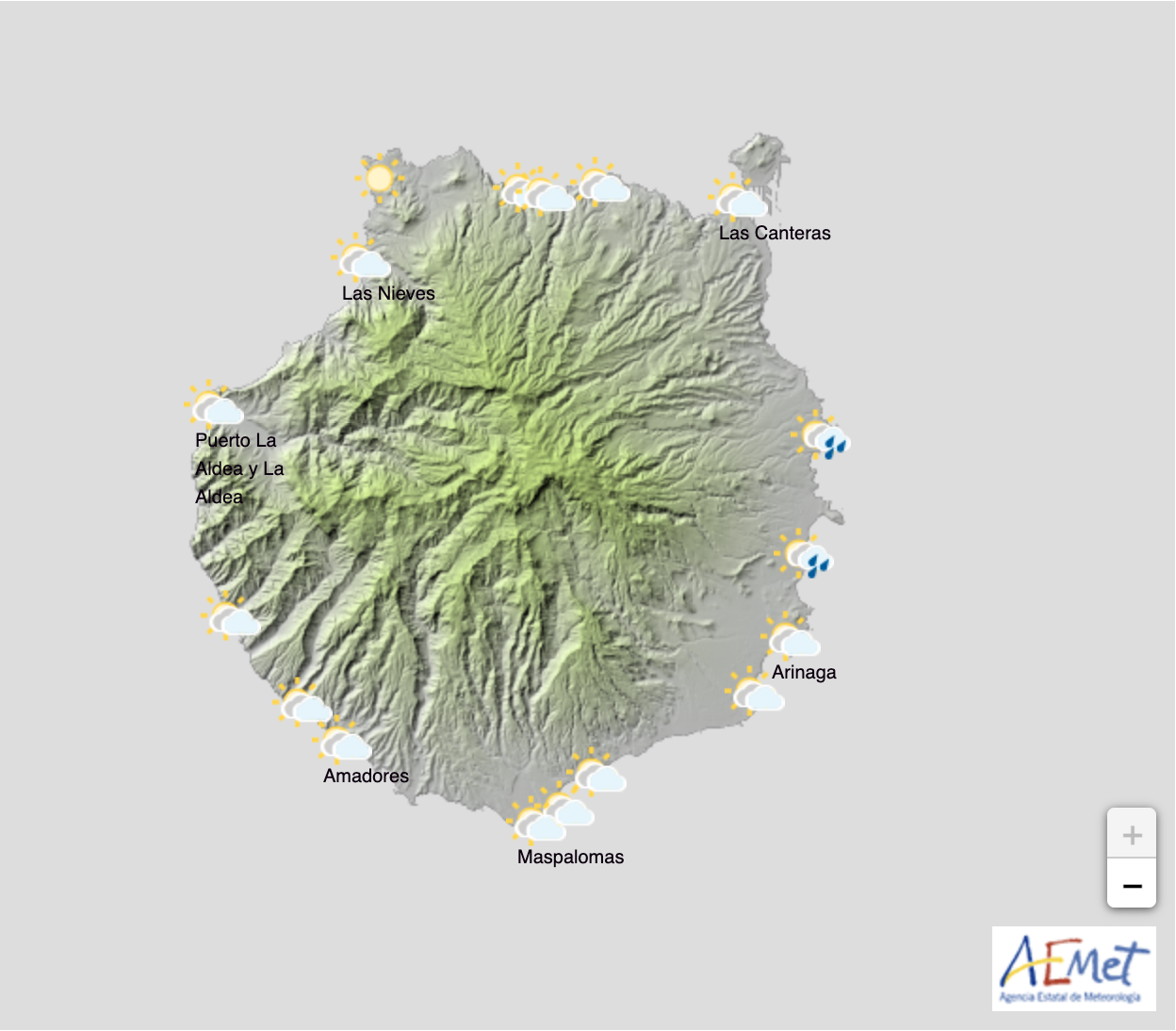You may see occasional columns of smoke at the summits of Gran Canaria around this time of year, as the Cabildo (island government) carry out pruning and ‘burning heaps’ projects around the the island’s peaks, aimed at preventing the spread of forest fires, also using the burnt trunks, of non-native Pinus Radiata, the Monterey pine, which were introduced in the 1950s, they are not resistant to fire like the canary islands pine, so they now use these to create earthwork barriers, called wrapping, to help prevent erosion.
Winter is when forest fire crews and the environment agency take advantage of the cooler weather to carry out fire prevention actions, such as prescribed burns, and advise that citizens use this time of year to clean the surroundings of their houses to help protect from fires, as otherwise it can hinder the work of fire crews in the event of a blaze. Home owners in the more mountainous areas are advised to removed debris and weeds from their property boundaries, since the accumulation of dry vegetation offers fire the continuity it needs to expand, as happened in 2019.
The Cabildo environmental and forestry brigades, which carry out their work in public woodlands, have already completed burning and wrapping in the Degollada de Las Palomas area, in the El Huerto nursery, and around the perimeters of Artenara, including the heliport, as well as in Llanos de Ana López in San Mateo and in Monte de Crespo of Valleseco, close to where the 2019 fire originated.
The tasks, which will continue over the coming weeks, involve the preventive pruning of Canary Island pines and Radiatas in order to make it difficult for fire to reach their crowns, which apart from helping to preserve the specimens, slows the potential for the spread of fires. After that, the brigades create burning heaps along with branches and other fallen debris to eliminate this potential wildfire fuel.
These silvicultural tasks aim to leave wild fires without fuel while providing an opportunity for the selective cutting of specimens with signs of disease or weakness, especially in areas with an excessive concentration of trees. Likewise, the Radiata pines affected by the fires, that are still standing despite being dead, are cut down to avoid the risks associated with their falling due to strong winds or any other cause.
These trunks are then used to stop erosion of the slopes, and are placed perpendicular or to forming V shapes, depending on the terrain and the slope, so that they help retain soil in case of rain and runoff.
These works also clear the ground for new reforestations with Canary Island pine, which encourages this endemic species to gain ground against Radiata, also known as the California pine, a variety with great adaptability and rapid growth that was originally used here in the 1950s to reforest large areas of Gran Canaria, although their resistance to fire is much lower.














In Cyprus they have fire breaks to contain fires
here too Roy, we have one of the very best mountain forest fire crews in the world, and their management is exemplary.